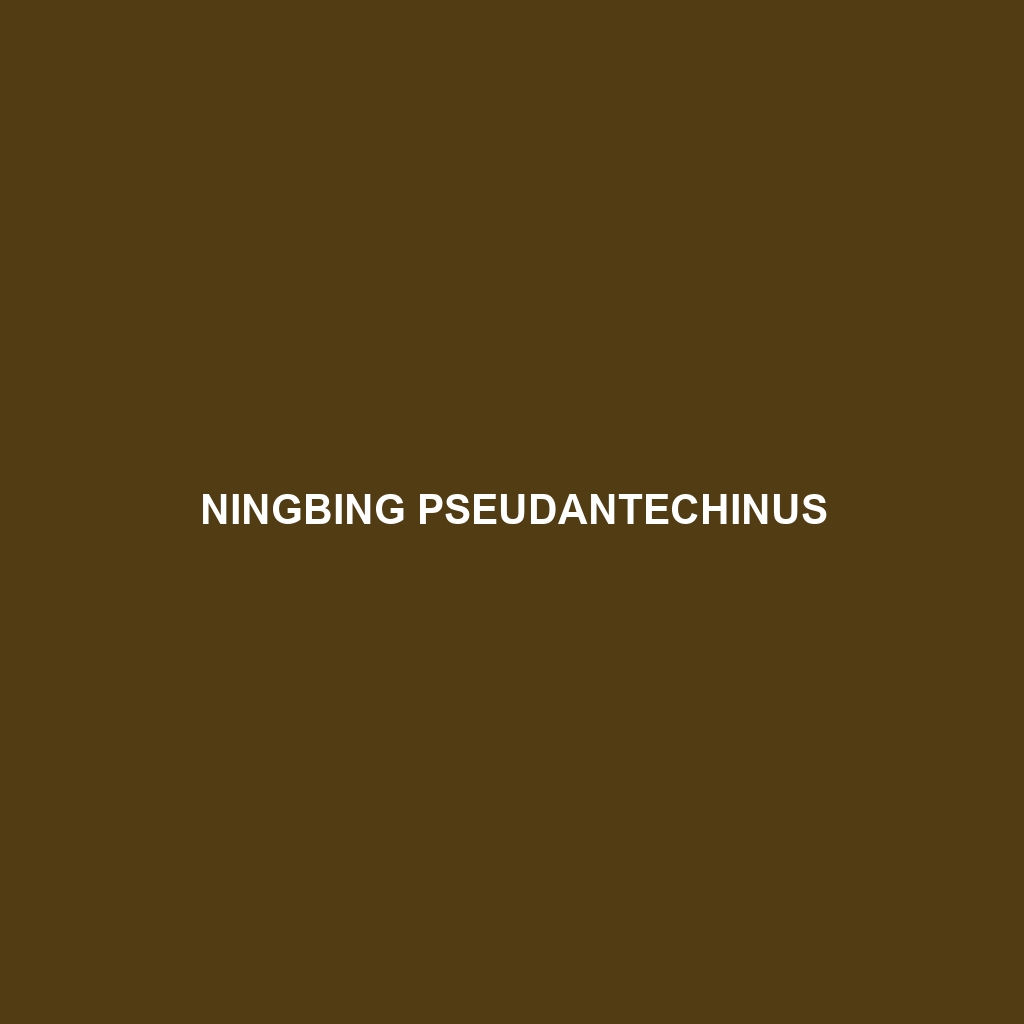Ningbing Pseudantechinus: A Remarkable Marsupial
The Ningbing Pseudantechinus (Pseudantechinus ningbing) is a small, elusive marsupial native to the rugged terrains of northern Australia. Known for its remarkable adaptability and secretive nature, this tiny creature belongs to the Dasyuridae family, which includes quolls and the Tasmanian devil. The Ningbing Pseudantechinus is an incredible example of evolutionary resilience and ecological specialization.
Physical Characteristics
Size: The Ningbing Pseudantechinus is a diminutive marsupial, typically measuring between 8 to 10 cm (3.1 to 3.9 inches) in body length, with an additional tail length of 7 to 9 cm (2.8 to 3.5 inches). Adult individuals generally weigh between 20 to 35 grams (0.7 to 1.2 ounces).
Coloration: This marsupial’s fur is primarily a sandy-brown to reddish-brown, providing excellent camouflage against the rocky outcrops and arid landscapes it inhabits. The underbelly is usually lighter, ranging from pale cream to white.
Special Features: The Ningbing Pseudantechinus boasts sharp claws and a prehensile tail, both of which are adapted for climbing and maneuvering through its rocky habitat. Its large ears and keen sense of hearing help it detect predators and prey in its environment.
Behaviors
Social Interactions: Ningbing Pseudantechinus are generally solitary animals, with interactions primarily occurring during the breeding season. Males are known to travel considerable distances in search of mates.
Feeding Habits: These marsupials are insectivorous, primarily feeding on insects, spiders, and other small invertebrates. They are nocturnal hunters, using their acute senses to locate prey under the cover of darkness.
Ecological Roles: As insectivores, Ningbing Pseudantechinus play a crucial role in controlling insect populations within their ecosystems. They also serve as prey for larger predators, thus contributing to the food web dynamics of their habitat.
Habitats
Geographical Range: The Ningbing Pseudantechinus is predominantly found in the Kimberley region of Western Australia and parts of the Northern Territory.
Preferred Habitat: This species favors rocky outcrops, boulder fields, and escarpments, where it can find shelter in crevices and under rocks. These environments provide safety from predators and harsh weather conditions.
Adaptations
Camouflage: Their sandy-brown coloration allows them to blend seamlessly into their arid, rocky surroundings, helping them avoid detection by predators.
Nocturnal Lifestyle: Being nocturnal reduces competition with diurnal species and helps them avoid the intense daytime heat of their arid habitat.
Reproductive Strategy: Females have a short gestation period, followed by a longer lactation period where the young are carried in the pouch until they are sufficiently developed to survive outside.
Conservation Status
The Ningbing Pseudantechinus is currently listed as Least Concern by the International Union for Conservation of Nature (IUCN). However, like many native Australian species, it faces threats from habitat destruction, climate change, and introduced predators such as feral cats and foxes. Continuous monitoring and habitat protection are essential to ensure their populations remain stable.
Fascinating Fun Facts
Survival Specialists: These marsupials can enter a state of torpor, a temporary hibernation-like state, to conserve energy during periods of extreme heat or food scarcity.
Tail Storage: The Ningbing Pseudantechinus can store fat in its tail, which serves as a vital energy reserve during tough times when food is scarce.
Unique Name: The species name “ningbing” is derived from the Ningbing Range in Western Australia, highlighting the regional significance of this fascinating marsupial.
The Ningbing Pseudantechinus is an extraordinary example of nature’s adaptability and resilience. By understanding and appreciating its unique attributes and ecological importance, we can better appreciate the delicate balance of the ecosystems it inhabits and the need for their conservation.
